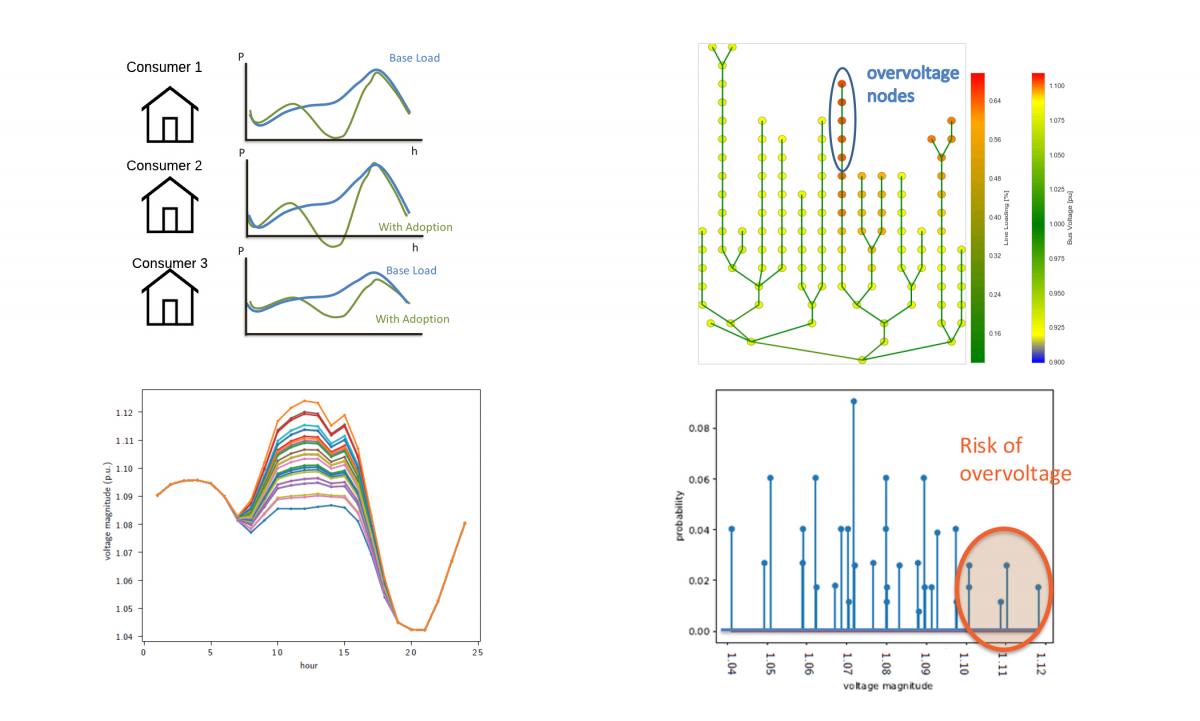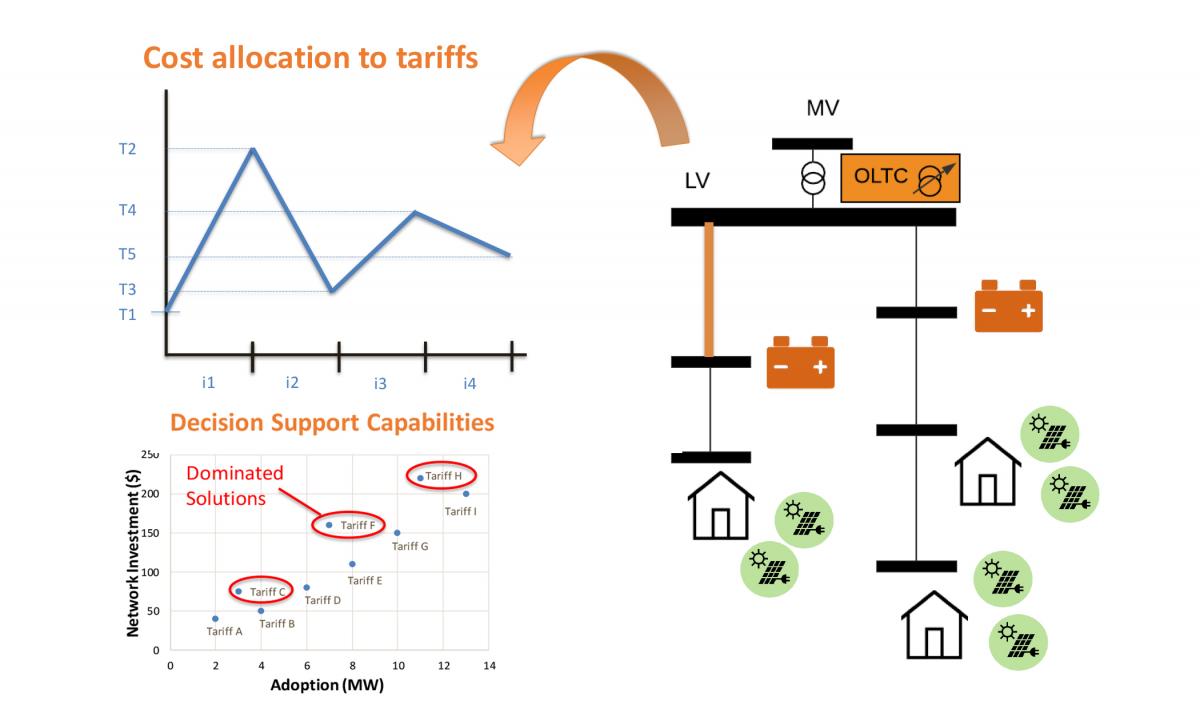Integrated Modeling Tool (IMT)
The Integrated Modeling Tool (IMT) models the interactions between consumers’ adoption of DERs, utility grid planning, and utility rate design.
Integrated Modeling Tool (IMT)
The portfolio of rates offered by electric utilities – often involving complex combinations of time-of-use rates, demand charges, feed-in remuneration, net metering, etc. – is a main driver for adoption of DERs by private consumers,  who are seeing these rates as opportunities to decrease their energy bill through behind the meter investments in DER technologies. However, an uncontrolled mass adoption of DERs can lead to significant grid hosting capacity costs, which may trigger the so called “utility death spiral”, where a sequence of consumers’ decisions to adopt more DERs (and eventually go off-grid) and utility hosting capacity costs can collapse the utility business. Thus, the Integrated Modeling Tool (IMT) aims to provide quantitative information to utilities and regulators to help them manage and avoid this problem, providing the technical framework to answer the following questions:
who are seeing these rates as opportunities to decrease their energy bill through behind the meter investments in DER technologies. However, an uncontrolled mass adoption of DERs can lead to significant grid hosting capacity costs, which may trigger the so called “utility death spiral”, where a sequence of consumers’ decisions to adopt more DERs (and eventually go off-grid) and utility hosting capacity costs can collapse the utility business. Thus, the Integrated Modeling Tool (IMT) aims to provide quantitative information to utilities and regulators to help them manage and avoid this problem, providing the technical framework to answer the following questions:
- How to influence consumers’ adoption of DERs through electricity rates (or other incentives, e.g. rebates) in ways that benefit the distribution grid?
- How can utilities combine rate design with grid investments to accommodate mass implementation of DERs and decrease costs?
- How to recover grid costs in scenarios of mass implementation of DERs?
Technical Approach
IMT models the interactions between consumers’ adoption of DERs, utility grid planning, and utility rate design. The adoption of DERs by private consumers is modeled as an optimal investment function, considering the cost/revenues provided by the utility rates. This model is used to simulate thousands of individual DER investments, which are mapped into netload changes at the nodes within a distribution grid. Then, an optimal planning algorithm is run - now from the utility perspective – to minimize the grid costs that must be made to accommodate the new DER capacity incentivized by the tariff. By allocating these added grid costs back to the rates through the rate design process, utilities can influence DER adoption within their networks and find economic regions of stability for the rates that contribute to maintaining the economic viability of the utility business.

Results and Achievements
Quantifying Long-Term Impact of Tariffs on Grid Security
- An adoption model is used to estimate the impact of utility rates on DERs investments and the consequent changes in netloads.
- Netload is mapped into voltage and congestion problems along distribution feeders through a load flow analysis.
- The uncertainty model is added to provide utilities with quantitative information on potential risks to the grid security.

Finding the Economic Stability of Rate Design
- High adoption of DERs significantly impact the utility investment and operation costs, which are recovered by the electricity rates. Thus, the rate design determines the economic conditions in which utilities promote and integrate DERs.
- By modeling the feedback loops between rate design, grid costs and consumer adoption, IMT can be used to assist the decision-making process of utilities and regulators by presenting a range of non-dominated and economic stable rates.

